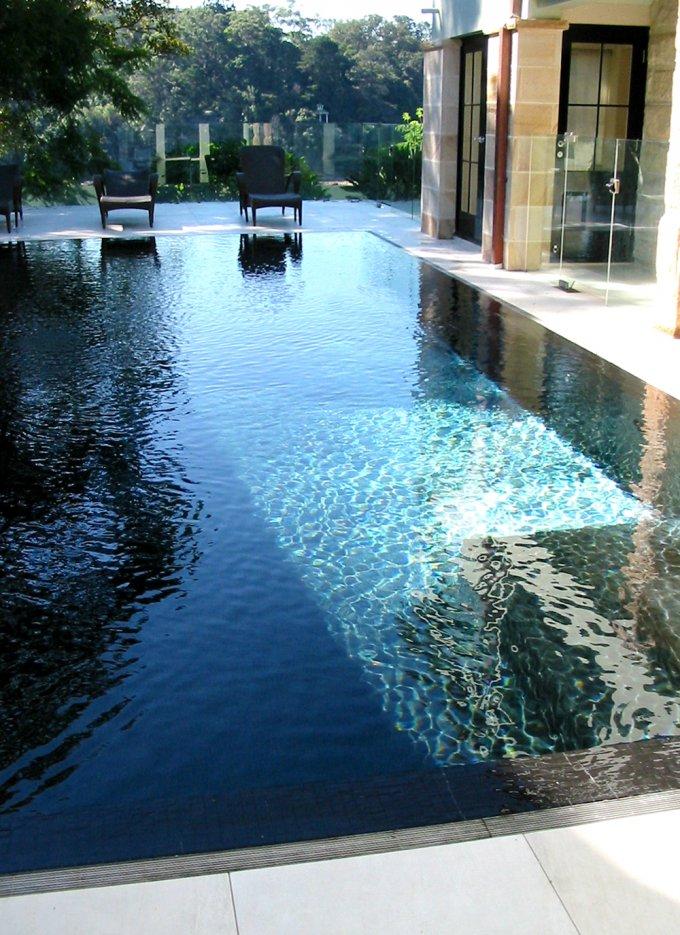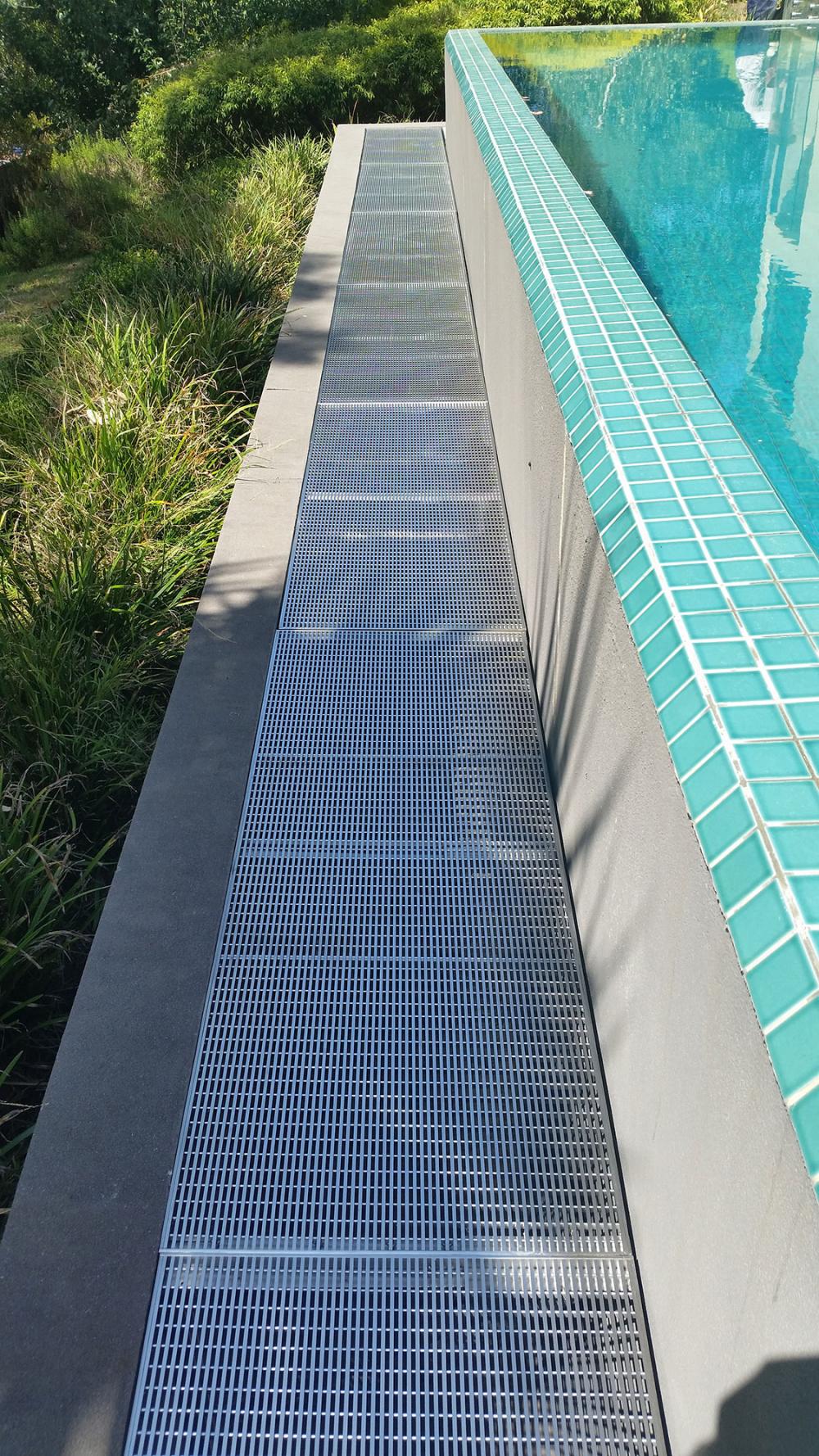
There is no doubt that infinity pools, those beautiful pools that seem to just drop off into the horizon are becoming increasingly popular, especially in high-end resorts and luxury homes.

Have you ever wondered how they actually work?
Unlike regular pools which have all walls extending upwards beyond the water surface, an infinity pool has one or more walls that meet the water level exactly, with the water level wall sloping downwards away from the edge creating a waterfall.
If you think about an actual waterfall, the water calmly falling off the edge gives the exact same effect.
So where does the water go?
The water simply falls into a drain or a catchment basin or balance tank that sits below the edge of the waterline and is in turn pumped back into the pool.
For an infinity pool to work perfectly the drain is one of the most important elements, simply put, if the drain can be seen the optical illusion doesn’t work.

Furthermore, if the drain is too deep it collects too much water allowing the water to sit in the drain longer instead of being pumped back into the pool making the water level in the pool visibly low – meaning the water edge becomes visible, also destroying the optical illusion.
Infinity pools are complex installations that require quality drainage products to ensure the illusion remains consistent. The primary reason why Stormtech drains are specified and seen in so many infinity pool installations is because of the large variety of options when it comes to design, size and flow rates. Stormtech's custom manufacturing capabilities mean that drainage can be made to spec, incorporating unique lengths, widths, curves and angles to fit seamlessly with any unique pool design.
Ensuring the right drainage is selected also reduces any potential safety risks related to the pooling of excess water, as well as the environmental impact of pool water escaping into the surrounding environment.
We review the specification of drainage products in some detail for architects, landscape architects and garden designers in our Specification Guide.
